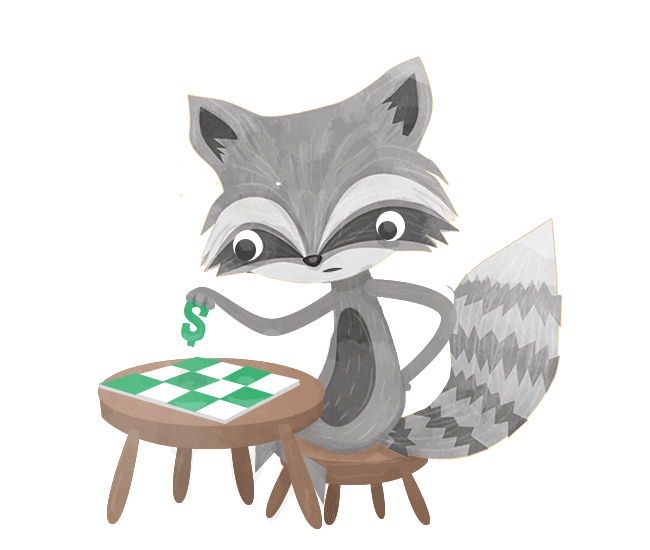
Your fifties are a pivotal decade in your life. It’s important that you take advantage of these years by solidifying your plans and continuing to build your nest egg of wealth for a secure retirement.
Here at Planswell, many of our clients ask us: “What should I be doing with my money right now?” It’s an excellent question, and it’s important to remember that every financial situation is unique.
We’ve organized a series of advice that can help you make the smartest money moves throughout your life, that Future You will seriously be thankful for.
Keep in mind that although the advice is organized by decade – money management is about where you are going, not where you are at the current moment in time. Don’t panic if you and your money experiences don’t exactly fit on this timeline.
Not in your fifties yet? Check out our other blog posts by decade:
As you enter your fifties, you’re likely closing in on retirement. With that excitement also may come the pressure to make sure you’re doing everything possible to be financially stable.
A bit worried about retirement on the horizon in your fifties? Don’t stress. You still may have 10-15 years of working left. You have time to max out your accounts, fatten your savings, and watch the money grow.
Here are some critical financial moves to make in your fifties.
If you have children and are reaching empty-nester status, it’s likely your household expenses will be lower than previous decades. The money you used to spend on kids, such as extra-curricular fees, new clothing and extra groceries, is now freed in your budget.
Instead of spending this extra cash, max out your savings and pay off your debt. It will bring you closer to the retirement you are hoping for.
If this isn’t your situation (yet), you still have options to reduce your household expenses. The most obvious one is downsizing. If you no longer feel like maintaining a bigger home, you could rent or purchase a new place that fits your current and future lifestyle. This could lead to saving on mortgage (or rent) payments on top of other expenses like property taxes and maintenance costs.
With only a decade or so left in the workforce, you can now see retirement on the horizon. With that goal in sight, it’s important you do what you can to make your future as bright as possible.
In all this planning, make sure you’re realistic with yourself on what you want retirement to look like. Get super specific with the details.
Price out all of these factors and see what kind of annual income you’ll need in retirement to make it happen.
It’s crucial to your success in retirement that you know how much you’ll need and how well you currently are positioned for this next stage in your life. Many have not yet taken the time to calculate the amount they’ll need to live comfortably in retirement.
A lot could have happened in your family life in recent years: new marriages, losing loved ones, or babies being born. Chances are, any wills or estate plans you made earlier in life won’t reflect these changes. If you haven’t yet done so, it’s important to set everything up so your money and possessions will be divided up the way you wish when you pass away. If you’ve already set an estate plan, it’s a good time to check that it’s up to date.
Documents that you may need to include are a:
As you get closer to retirement, make sure you’re keeping your eye on the prize. Set your sights and investments on making your dream retirement happen by maxing out all retirement saving accounts.
An RRSP allows your savings for retirement to grow tax-free. These plans are a vital part of most Canadians’ retirement planning mainly because of the tax advantages they offer.
The total amount that you can annually contribute to your RRSP depends on a percentage of your income – 18% in 2019, for example, to a maximum of $26,500. If you don’t contribute the maximum in any given year, the remaining balance is carried forward so you can put more in the future.
Canada Revenue Agency (CRA) allows you to carry forward any unused contribution room indefinitely and add this to the amount you can contribute in future years.
In 2009, the Canadian government introduced the Tax-Free Savings Account (TFSA) to help Canadians save their money. A TFSA allows you to earn tax-free income on money you put in the account while watching your savings grow tax-free throughout your lifetime.
The title “Savings Account” is widely considered to be inaccurate, though, because your TFSA doesn’t have to be (and shouldn’t necessarily be) a savings account. A better description would be “Investment Account”, as you can hold a variety of investments such as ETFs, stocks and bonds in your TFSA.
With the TFSA limit at $6,000 for next year, the total room available in 2019 for someone who has never contributed and has been eligible for the TFSA since its introduction in 2009 is $63,500. Like an RRSP, any contribution amount not made to the TFSA during a year can be carried forward indefinitely.
When you build a financial plan with Planswell, you will be equipped with the knowledge that you need to retire on your terms. We’ll work together with you to create a custom plan that focuses on the things that make you happy while avoiding a lifestyle decline in retirement. With our expert and personalized advice, you’ll be able to approach your retirement with confidence and with peace of mind.
Get started today. It’s time to plan the best years of your life.
YOUR FREE FINANCIAL PLAN
The best plan also has the best price.
Build your free plan today.
Start now